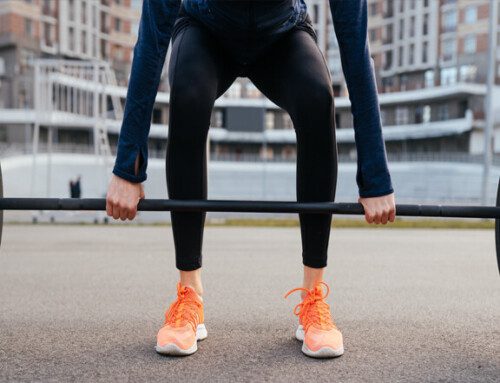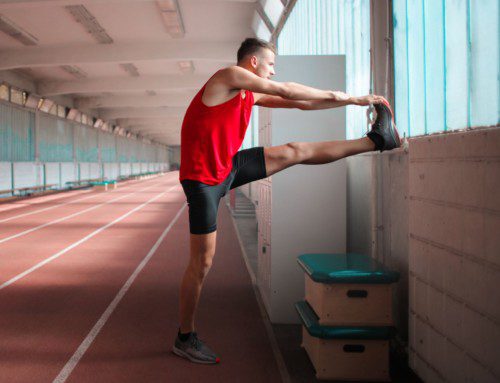During pregnancy have you ever thought about having a natural delivery? There's a reason it's called 'labor!' Having a baby is physically taxing and requires tremendous work. Many women who want to experience the labor and delivery of their child without the assistance of pain medication may wonder if there is anything they can do to help prepare their body for this endurance event. Are there any specific ways to help condition and set up the body for success?
First, listen to your doctor
It must be noted that every pregnancy is a unique situation. Certain types of delivery may not be appropriate for everyone and it is important to consult with your doctor to determine the best options for you and your baby.
Your changing anatomy
As the baby grows in the mother's uterus, core muscles are stretched and stressed. The added weight pulls the lumbar spine forward and pushes the ribs up. Hormones called relaxin cause ligaments to loosen allowing the pelvic bones to widen. The cardiovascular and respiratory systems also readjust leading to an elevation in heart rate and respiratory rate. It's important to respect these changes and work to assist the body as it goes through this process.
Specific exercises
The American College of Obstetricians and Gynecologists recommends pregnant women should be encouraged to engage in regular moderate intensity physical activity in the absence of contraindications. (1) Considering that the expecting body undergoes around 40 weeks of transition, what exercises will facilitate the changes needed to naturally deliver a baby? Here are a four ways to help get your body in shape:
The swiss ball is your friend
Using an exercise ball is a great way to strengthen your back and pelvis. You want a good size and properly inflated ball so that you can sit with your feet planted and hips slightly higher than knees to facilitate anterior pelvic tilting. While sitting on the ball, bouncing, rocking and circling the hips and marching the legs engage the core and pelvic muscles. Spend a few minutes on the ball every day. Another benefit of the swiss ball can is that it can also be used during labor to provide physical relief.
Yoga till the end
Benefits of yoga include increased strength, flexibility, and posture- just to name a few. If done with awareness and attention, it is safe to practice yoga throughout pregnancy. A study published in Obstetrics and Gynecology examined the effects of 26 yoga poses in women during 35 to 37 weeks of gestation. They found all postures were well tolerated with no acute adverse maternal physiologic or fetal heart rate changes. (2) Some poses can also actually help encourage the pelvic changes needed during labor and delivery. If your body allows, squatting poses, especially in the third trimester, can encourage pelvic opening. As the abdomen gets bigger, prone postures (lying flat on the belly) like Locust or Bow Pose should not practiced. Corpse Pose and Happy Baby Pose are also advised against due to the pressure of the womb on important abdominal vasculature. Because of the change in center of gravity, balance poses should be performed with caution next to a wall for support during the first and second trimesters and avoided during the third to prevent potential falls. With all movements, use modifications with the use of chairs or blocks to aid in body alignment and safety.
Your shoes were made for walking
Walking is another safe way to help prepare your body and is appropriate for women of all fitness levels. Pregnancy hormones that cause ligament relaxation combined with increased body weight result in more stress in the feet, which can lead to plantar fasciitis. That is why it is even more important during pregnancy to have supportive shoes. There are many brands of shoes that offer additional arch support and will help you maintain cardiovascular and muscle conditioning without overstressing the feet. Aim for at least 30 minutes of moderate-paced walking six days a week. Keep in mind that as your pregnancy progresses, you may have to adjust to shorter but more frequent walks.
Perineal stretching and massage
Perhaps the most drastic changes during delivery occur to the soft tissues of the birth canal. While some may be squeamish to try any pre-delivery prep work in this area, several studies indicate that massaging the perineum in the final month of pregnancy is safe and may even reduce the risk of trauma during delivery and lessen the incidence of post partum pain, especially for first-time moms. (3,4) To perform the self-massage, start with clean hands, olive or natural oil for lubrication and sit back in a reclined position. Insert thumbs into the vagina about 1 inch and pull toward the anus, holding 1-2 minutes. Then, massage back and forth making a 'U' shape for 2-3 minutes and repeat until you reach a total time of 10 minutes.
Yes you can!
While preparing your body for a natural birth is not exactly like training for a marathon, daily strengthening and conditioning will help you meet the physical demands of labor and delivery. When performed with knowledgeable intention, exercise, yoga, walking and self-massage can give your body the support and assistance it needs for the demands of labor.
Sources:
- Exercise during pregnancy and the postpartum period. ACOG Committee Opinion No. 267. American College of Obstetricians and Gynecologists. Obstet Gynecol 2002;99:171–3
- Yoga in Pregnancy: An Examination of Maternal and Fetal Responses to 26 Yoga Postures. Polis, Rachael L; Gussman, Debra; Kuo, Yen-Hong. Obstertrics & Gynecology. 126(6):1237-1241, December 2015
- Antenatal Perineal Massage to Prevent Birth Trauma. Seehusen, Dean; Raleigh, Meghan. Am Fam Physician. 2014 Mar 1;89(5):335-336.
- Does antepartum perineal massage reduce intrapartum lacerations? Dame, John; Neher, Jon, Safranek, Sarah. J Fam Pract. 2008 July;57(7):480-481





